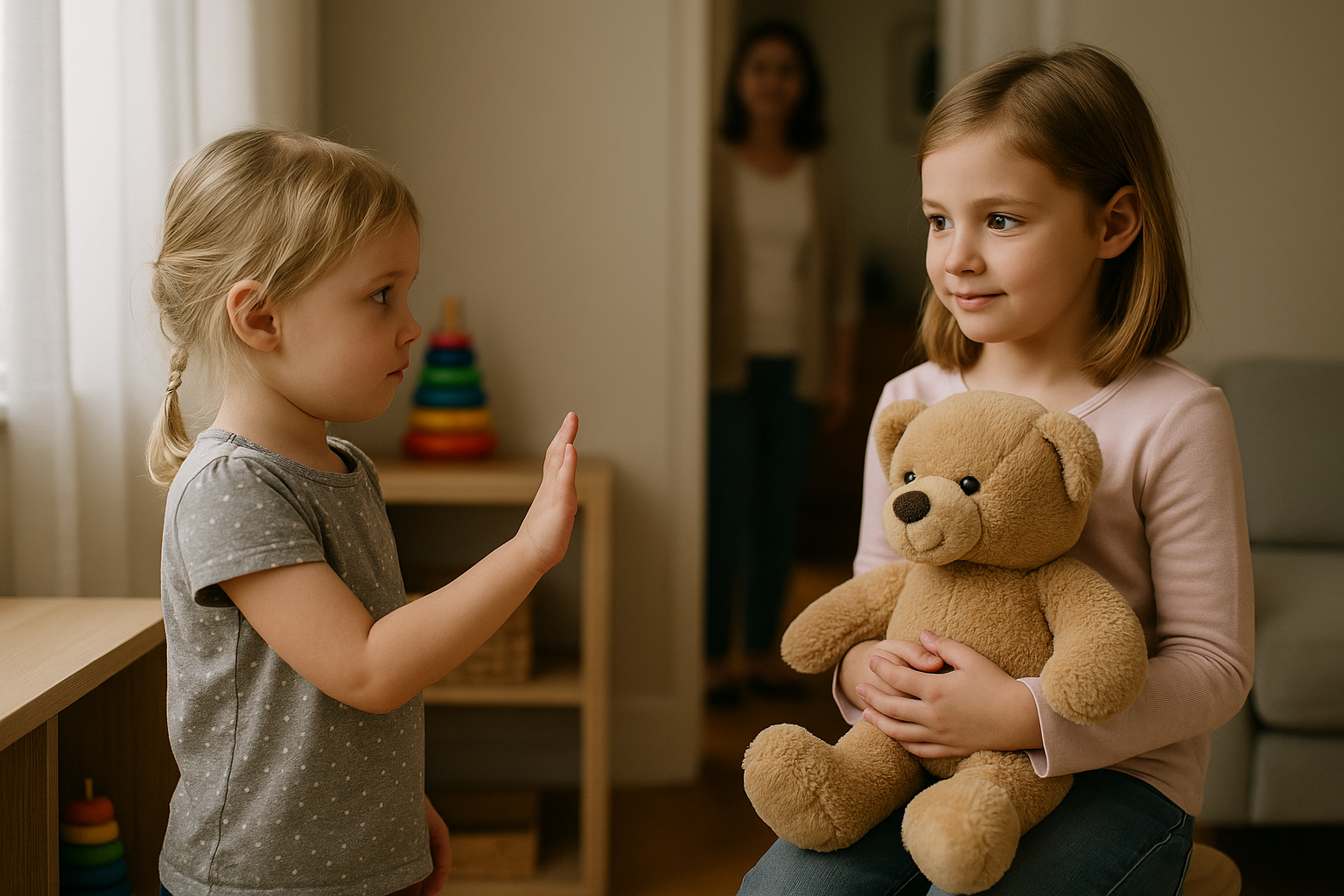Respecting boundaries is a vital life skill. It helps children build healthy relationships, feel safe in their bodies, and understand consent from a young age. Whether it’s learning to knock before entering a room, saying “no” confidently, or understanding when others need space, boundaries create emotional safety and mutual respect. Here’s how to teach this important concept in everyday moments.
1. Explain What Boundaries Are
Use simple, age-appropriate language to describe what a boundary means
Examples:
- “A boundary is something that keeps us safe and comfortable”
- “It’s okay to say no if you don’t want a hug”
- “Other people have boundaries too, and we need to respect them”
Use real-life situations to illustrate what healthy boundaries look like
2. Model Boundary-Respecting Behavior
Children learn how to treat others by watching how you treat them—and how you treat yourself
Ways to model:
- Say “I need a few minutes of quiet, then I’ll help you”
- Ask before touching or entering their space: “Can I come in?”
- Respect their “no” unless safety is at risk
Your actions teach them that everyone deserves to feel in control of their space and body
3. Teach Body Autonomy Early
Even toddlers can begin learning that their bodies belong to them
What to teach:
- They can say no to hugs, kisses, or tickles
- No one has the right to touch them without permission
- “If someone makes you uncomfortable, come tell me”
Make sure they know they’ll be believed and supported
4. Encourage Open Communication
Create a home environment where children feel safe to express discomfort or disagreement
Tips:
- Listen without judgment when they say “no” or share a concern
- Avoid punishing them for setting a boundary respectfully
- Praise their honesty: “Thank you for telling me how you feel”
Openness teaches that boundaries are healthy—not disrespectful
5. Use Role-Play to Practice
Help your child practice how to set and respect boundaries through pretend play
Scenarios to try:
- “What would you say if a friend takes your toy and you want it back?”
- “Let’s pretend someone tries to hug you and you don’t want one. What can you say?”
- Practice being on both sides: setting and responding to boundaries
Role-play builds confidence for real-life situations
6. Set Family Rules Around Consent
Create clear rules that reinforce mutual respect and personal space at home
Examples:
- “We always ask before touching someone else’s body or belongings”
- “If someone says stop, we stop—no matter what”
- “Knock and wait for permission before entering a room”
Consistent rules create a culture of safety
7. Acknowledge When Boundaries Are Crossed
Children will make mistakes. Use those moments as teaching opportunities
What to say:
- “You didn’t listen when your sister said stop. Let’s talk about why that’s important”
- “How would you feel if someone ignored your ‘no’?”
- Help them apologize and do better next time
Focus on learning, not shame
8. Respect Their Emotional Boundaries Too
It’s not just about physical space—emotional boundaries matter as well
What this looks like:
- Letting them choose when to talk about something
- Avoiding pushing for hugs, kisses, or affection they’re not ready for
- Letting them express anger, sadness, or fear without minimizing it
Respect teaches emotional safety
9. Use Stories and Media as Teaching Tools
Books, movies, and shows offer great chances to talk about boundaries in context
How to use them:
- Point out when a character respects or crosses a boundary
- Ask, “What would you do in that situation?”
- Choose stories with strong examples of consent and self-respect
Stories create lasting emotional lessons
10. Celebrate Assertiveness and Respect
When your child shows respect for someone else’s boundary—or sets one of their own—acknowledge it
Phrases to use:
- “I loved how you asked before touching your friend’s toy”
- “That was brave, the way you said you weren’t comfortable”
- “You respected your brother’s space when he needed time alone—great job”
This reinforces boundary-setting as a strength
Healthy Boundaries Build Stronger Children
Teaching children about boundaries isn’t just about preventing harm—it’s about building confidence, empathy, and trust. When children learn that their body, voice, and feelings matter—and that others’ do too—they grow into emotionally intelligent, respectful adults. And it all begins with simple, everyday conversations led by example and love
